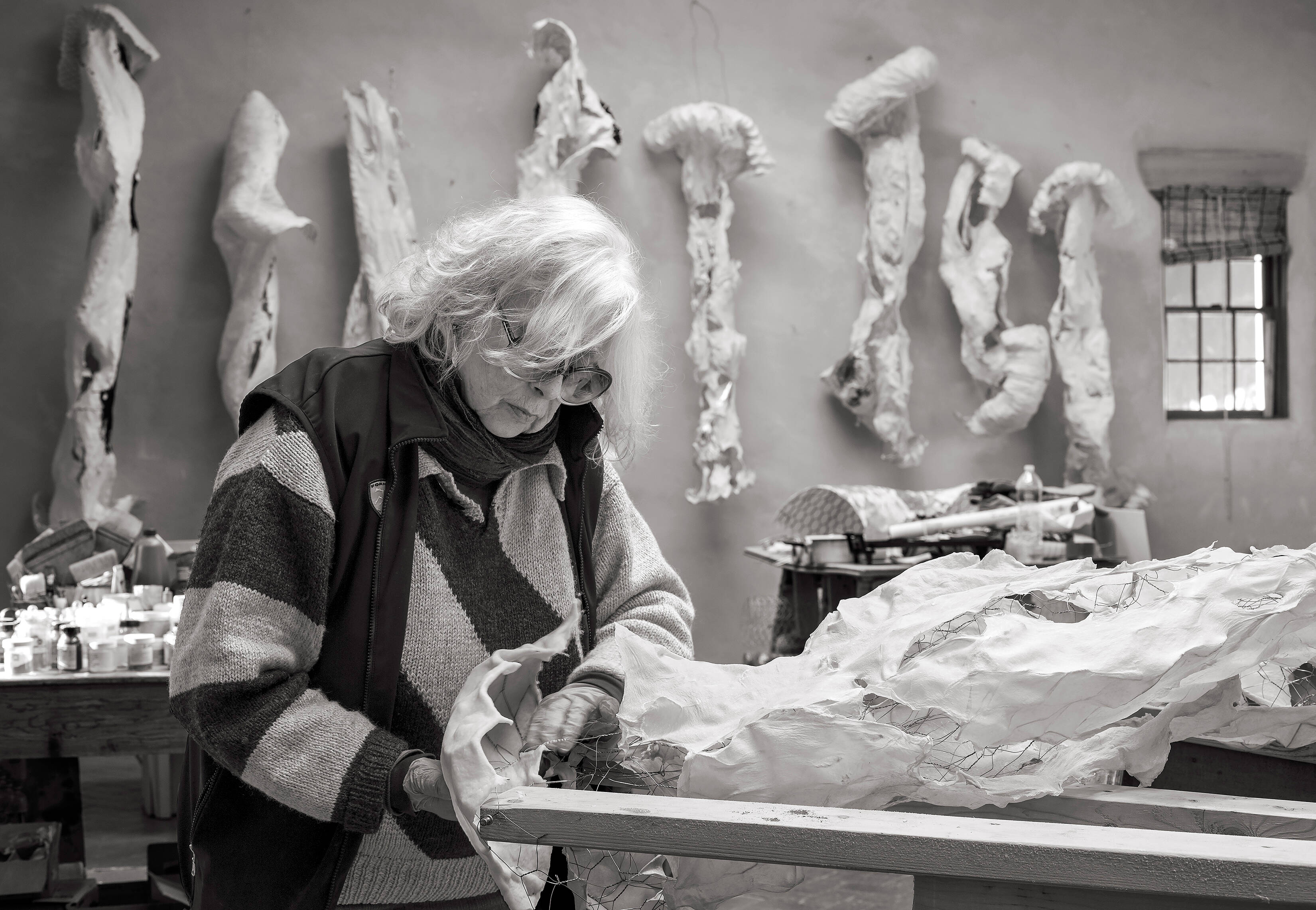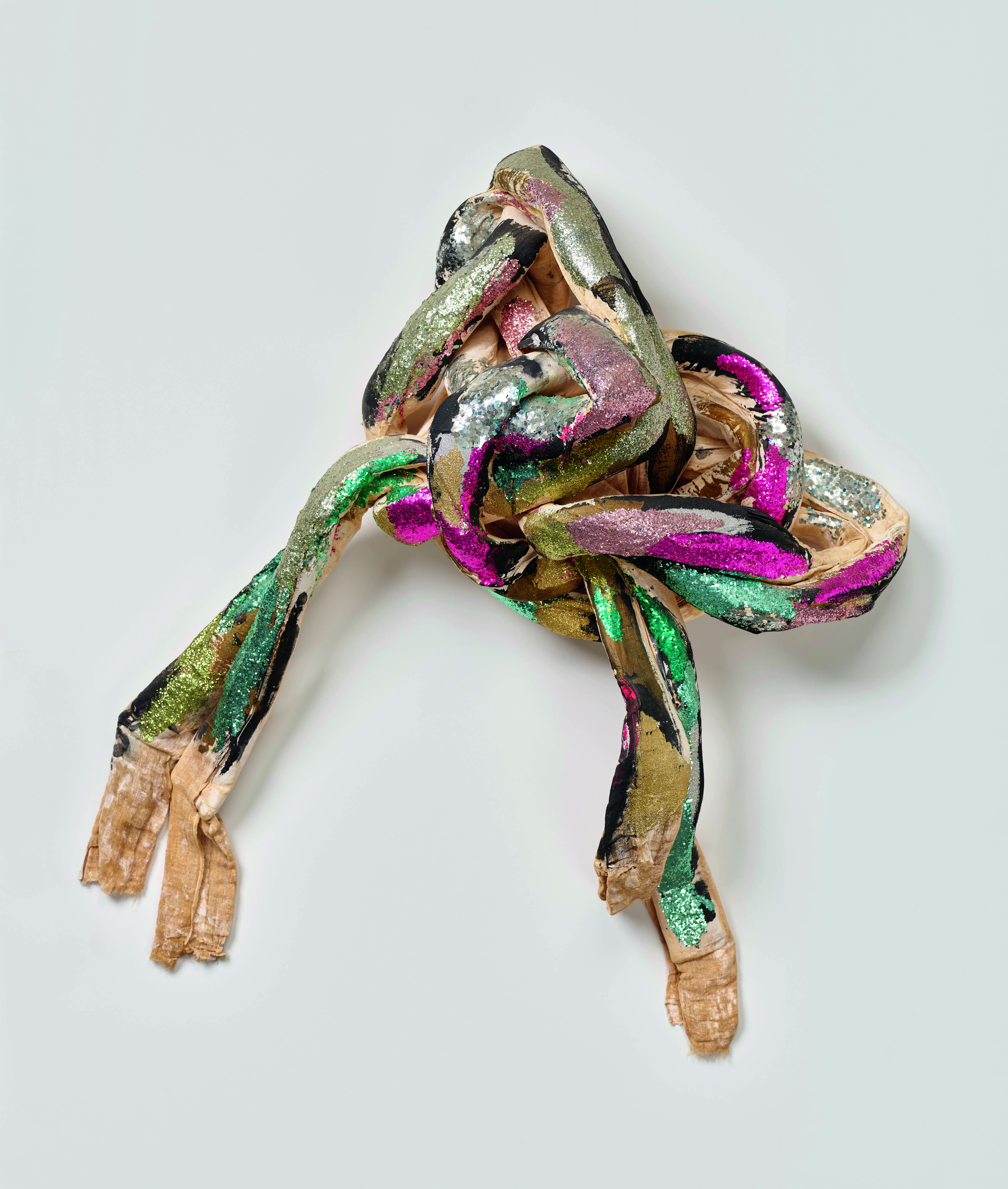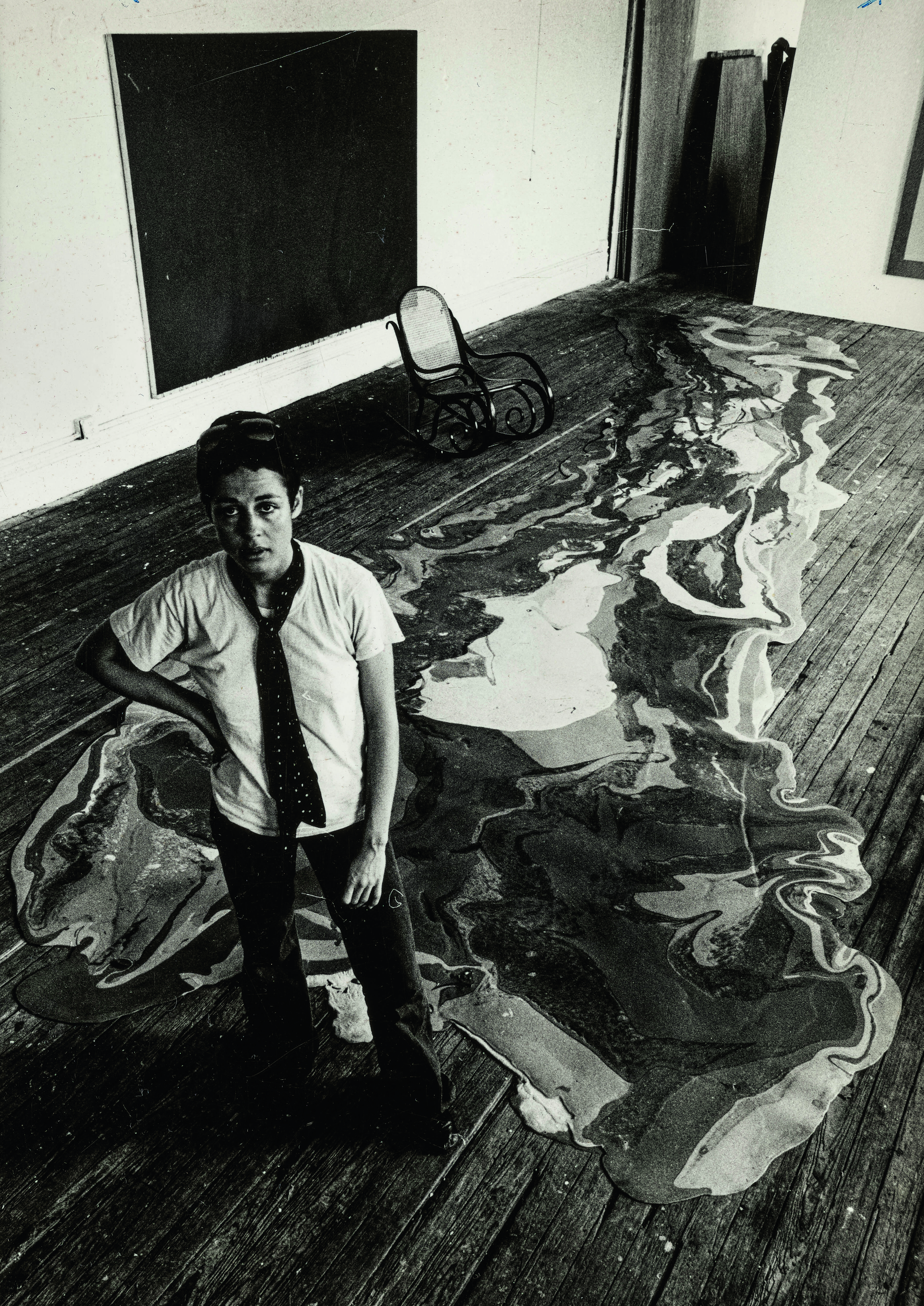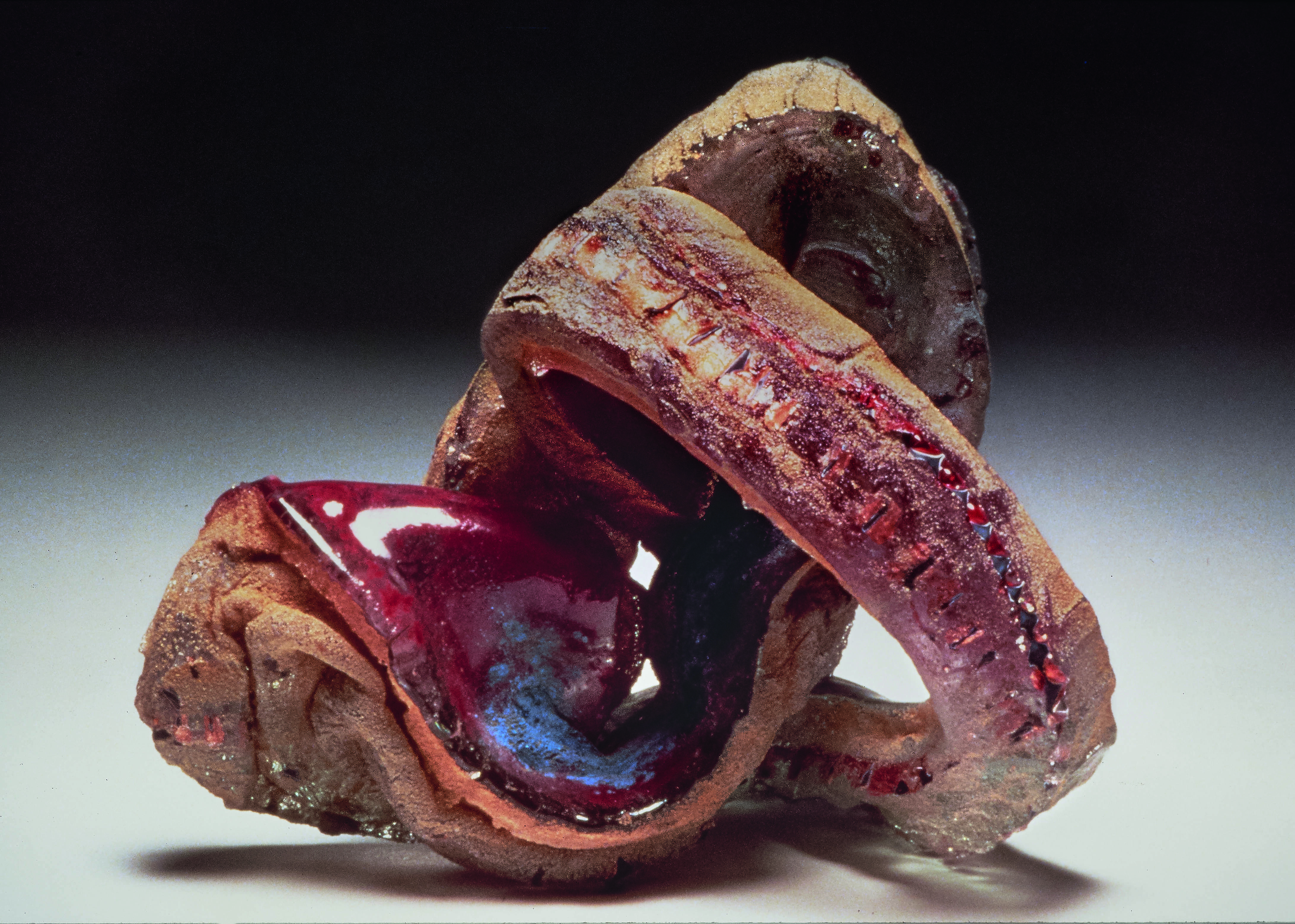
Why Lynda Benglis’s own body is the ultimate guide to her art
From synthetic rubber, to clay to chicken-wire, this acclaimed American sculptor sees the human body as the measure of all things
Lynda Benglis’s mother was a seamstress and an amateur painter; together, they would carry out craft projects, and later in life, Lynda would reflect on the way her mother’s body informed these works.
In our new book the acclaimed American sculptor describes how her mom used to measure out cloth, holding a length between her chin and her outstretched arm.
“My mother loved fabric, and I remember being quite impressed that she could measure like that,” she says. “I remember it from childhood and thinking about associations. What is measurement? The body is a measurement of all things we know.”

Lynda Benglis, Zita, 1972. Aluminium wire mesh, cotton bunting, plaster, paint, sparkles, 112 x 38 x 28 cm. 2022 Lynda Benglis / Licensed by VAGA at Artists Rights Society (ARS), NY. Picture credit: RISD Museum, Providence, RI
That sense of bodily measurement has remained with the artist. “Her work has long been connected with the possibilities of the human body,” writes Storm King Art Center’s artistic director Nora Lawrence. "Latex paint, thrown a comfortable distance across a floor; liquid wax, applied in layers across a board the same length as her arm’s span; hand-tied knots of muslin and wire mesh, sized and placed to resemble a human torso."

Lynda Benglis with Planet, New York, 1969; 2022 Lynda Benglis / Licensed by VAGA at Artists Rights Society (ARS), NY. Photo: Norman Seeff
In the artist’s conversation with the curator Andrew Bonacina, Benglis references another early experience with fabric which suggests a strong bodily focus was coming in later life. “One of the earliest physical sensations I often think about is wrestling with my bed sheets: that sense of being consumed by something, grappling with it and in the process your body and the materials intermingle."

Lynda Benglis, Ksi, 1984. Sand cast glass, copper sheet, powdered glass, 37 x 39 x 27 cm. 2022 Lynda Benglis / Licensed by VAGA at Artists Rights Society (ARS), NY. Photo: Douglas M. Parker Studio
Our new book is filled with images of Benglis pouring out foam or latex, shaping clay, bending a chicken-wire frame, or installing delicate works of gold. In the accompanying texts, she also describes equally embodied processes, such as a series of sculptures she made in New Zealand, “where I took large cylinders of fresh clay and I would wrestle them into forms,” she says. “They were about my height, so their basic forms are like bodily volumes. I thought of these pipes like paintings that were rolled or extruded, and surfaces that I cut into with physical gestures.”
These works and actions link Benglis’s less voluminous, yet no less important body of photographic work, in which she poses (sometimes nude) in a number of different settings, often to undermine or question gender stereotypes.
Echoing the ancient Greek Pythagoras – who argued that the human being is the measure of all things – Benglis says, “if there’s anything that ties them together, it’s my own body.”

Lynda Benglis
To see more from this deeply embodied artist, order a copy of Lynda Benglis here.